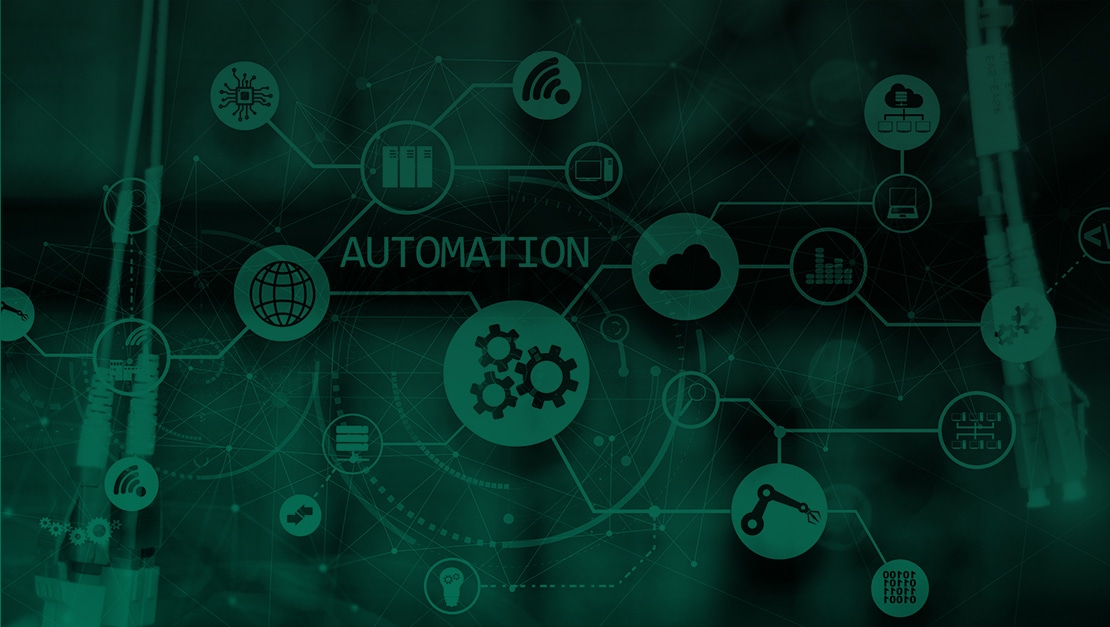Businesses are constantly looking for ways to make operations and workflows more efficient. From eliminating redundancies to cutting down on the manpower needed to handle manual tasks, the idea is to get a workflow streamlined down to something that is as cost and resource-efficient as possible.
Workflow automation allows companies to do just that. Businesses are turning to software and algorithms to develop unique automations that enable teams to automate tasks or series of tasks. With workflow automation tools, companies can turn otherwise time-consuming, manual tasks into automations that can be completed in a matter of seconds.
In a modern business environment, workflow automation has become a gold standard when it comes to efficiency. Rather than spending time on manual data entry or task dependencies, automation makes workflows quicker, less resource-intensive, and more accurate.
In this piece, we’ll take a closer look at workflow automation, its benefits, challenges, and how AI tools like aiOla are using it to create more reliable, hands-off workflows.
What Is Workflow Automation? Key Concepts
Workflow automation is the use of software and technology to automate and streamline routine and repetitive tasks. The goal of workflow automation is to increase efficiency, reduce errors, and free up human resources to focus on more creative and strategic tasks.
To better understand how this works in practice, let’s look at a couple of workflow automation examples:
- In a project management tool, automation can notify the right stakeholders when a task is almost due so that nothing falls between the cracks.
- In other business workflows, like manufacturing, automation can be implemented to ensure machine maintenance is completed accurately and that data about machinery status is automatically transmitted to the right parties.
- In food safety industries, workflow automation is used to ensure the safety of ingredients and processes, such as ingredient storage, inspection data, and quality assurance.
Essentially, the significance of workflow automation lies in its ability to transform complex operations into seamless, efficient processes, leading to overall organizational success. By empowering employees to spend more time focusing on high-value tasks, businesses can accelerate the pace of operations and allocate resources more strategically.
Benefits of Workflow Automation
75% of companies already using workflow automation agree that it provides a significant competitive advantage. That said, there are many other benefits to workflow automation. To better understand how automation can be advantageous to your business, let’s break down a few of the different benefits it can offer.
Increased Operational Efficiency
Automating repetitive tasks helps standardize various work processes, freeing up time spent on manual tasks. This allows businesses to streamline workflows by completing tasks quicker, leading to higher productivity. With this productivity boost, organizations can do more with their existing resources rather than expanding manpower or budgets.
Time and Cost Savings
Cutting down on time spent on repetitive tasks also helps companies cut down on tasks. Automating tasks that would otherwise require significant time investments allows employees to redirect their efforts toward other projects that may be more essential or profitable. Additionally, by reducing human exposure to repetitive tasks, the opportunity for errors decreases, contributing to substantial cost savings in the long term.
Enhanced Accuracy and Error Reduction
When you create an automation unique to your business’s workflows, it will always follow the same predefined rules. This reduces the risk of human error, which can happen with manual task execution. By having fewer hands on each task, workflow automation also helps safeguard sensitive data and helps companies remain compliant.
Improved Collaboration and Communication
Team members can benefit from workflow automation since processes can be created to send out real-time updates, notifications, or task assignments. This helps teams stay informed on current workflows and their progress. Since no one needs to be in charge of manual tasks, bottlenecks are reduced, ensuring teams can continue collaborating seamlessly.
Implementing Workflow Automation in Your Business
According to a survey by Gartner, 85% of infrastructure and operations leads that aren’t yet reliant on automations will begin adopting automation tools in the next few years. This points to the fact that many businesses that haven’t already are now in the process of implementing new automation tools.
While workflow automation is often simple to implement, it does take some strategic planning and consideration to ensure it makes sense with your current operational needs. Before adopting workflow automation, you want to make sure you’re implementing it in the best way for your team so that the right tasks are automated. Here are some three factors you should look into pre-implementation:
Assess Your Business Processes
Thoroughly assess your existing business processes so that you’re identifying repetitive tasks that can be automated. When you find these tasks, make sure automating them makes sense in the scheme of an entire workflow by looking at dependencies or other interactions to ensure your automates are targeted.
Integrate With Your Existing Systems
Workflow automations shouldn’t create new systems for your team but rather fit into existing ones. Ensure your current tech stack is compatible with automation and consider how various workflow automation solutions would interact with other systems and tools you use regularly to minimize disruptions to data flow and your technology ecosystem.
Customize for Your Specific Needs
Automations should meet your business’s unique needs, so look for workflow automation that can be customized to address your company’s challenges. The workflow automation tool you use should also be scalable and adaptable as your business changes and grows and your needs evolve.
Workflow Automation Implementation Challenges and Their Solutions
While workflow automation can transform your business, that doesn’t mean implementation comes without its challenges. That said, the challenges to adoption can be resolved through advanced planning. Here’s a look at some of the challenges you might expect to face and how to solve them.
Resistance to Change
Employees may worry about workflow automation, especially when it relies on AI technology, as they fear it can replace their jobs. To avoid this resistance, make sure you foster an open culture of communication so that employees understand the clear benefits and how automation can help them improve their roles by removing the more mundane tasks. According to research by McKinsey, organizations with successful automation adoption were focused on employee skill gaps and expertise when designing workflow automation solutions.
Complexity of Integration
Integrating workflow automation into your existing systems can be challenging and lead to service disruptions. However, by preparing your systems ahead of time through an assessment and considering which workflow automation platform is most compatible with your existing technology, you can ensure a smooth transition.
Lack of Goals
Automation might sound exciting, but without setting clear goals for why your company needs it and how it’s meant to actively improve workflows, you’re unlikely to see any meaningful results. An easy fix for this is establishing clear objectives from the start by involving your employees and gathering feedback on what manual tasks can be automated to improve productivity.
Budgeting Concerns
Implementation of new software isn’t always cheap when you factor in initial costs as well as integration and training. However, conducting a cost analysis beforehand will help you determine the upfront costs against the projected long-term cost savings of automation technology.
Workflow Automation Through Speech: aiOla’s Non-Disruptive Approach
aiOla is an AI-driven speech platform that helps businesses streamline operations using only the power of voice. Using Natural Language Understanding (NLU) and Automatic Speech Recognition (ASR) technologies, aiOla can automate workflows in a way that’s entirely non-disruptive and entirely customizable. Thanks to its voice technology, aiOla comes with several benefits, such as:
- Through natural language, aiOla’s system picks up on critical data which can be used to automate workflows like inspections and manual checks
- aiOla’s platform can accomplish this in over 100 languages and any industry jargon, making it a highly versatile work tool usable in multiple scenarios
- Not only that, there’s virtually no learning curve, making resistance to change in your workforce virtually non-existent
All employees need to do is speak as they normally would to activate aiOla’s AI technology, and the platform works in the background to capture vocal queues and complete workflows. aiOla is being used in multiple industries to complete critical workflows, such as food safety and inspection, fleet management, supply chain, manufacturing, and more.
aiOla Workflow Automation in Action: Getting Operations Down to 1 Minute
When applied to a multinational fleet management company with thousands of vehicles, aiOla was able to drastically cut down on time spent on manual inspections. Rather than manually inspecting each aspect of a vehicle in a fleet, aiOla’s AI-powered workflow automation platform was able to cut this process down from over 15 minutes to just 60 seconds.
Using only their voice, drivers can visually assess a vehicle, speak into the platform, and capture essential data about a vehicle. This data is then used to automate workflows and gather insights to prevent malfunctions. In this process, since all data is captured through speech, there’s less opportunity for human error in either forgetting to log something in an inspection form or writing something down incorrectly, making aiOla not only quicker at automating workflows but also safer and more accurate.
Better Automations, Better Workflows with aiOla
Since the automation itself influences the outcome of a workflow, it’s essential to use a platform that relies on highly accurate data to trigger an automation. With aiOla, the information your team can capture is based on otherwise lost speech data, making it a more reliable source of information than manually inputting data, which is subject to error.
aiOla’s workflow automation capabilities extend beyond the average platform, as it allows teams to continue their existing operations and continue relying on existing work tools without any disruption. In this way, implementing aiOla into your current tech stack won’t incur major adoption costs or resources as employee training is kept to a basic level and you don’t need to change any systems you’re already using.
Schedule a demo with one of our experts to see how aiOla can automate your business’s workflows with minimal disruption.








